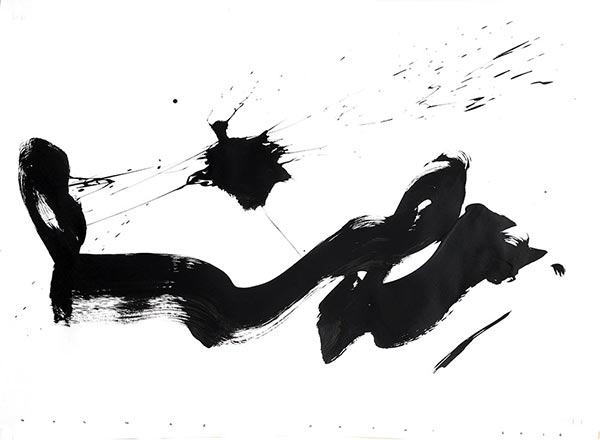 |
|
A piece of art by Iranian artist Golnaz Fathi. [Courtesy of Golnaz Fathi/Provided to China Daily] |
"It was fabulous, a cultural bridge," says Fathi. "We did six works together at the gallery in front of an audience – some of them I started, some of them he started, and the other one added to it to finish." While she says the Persian and Chinese calligraphy styles are quite distinct, they have one important thing in common: "The kind of dedication you have to give to become a master is quite the same. You cannot become a calligrapher if it is just a hobby – it should be your life."
Fathi is holding a second exhibition in Shanghai in May; gallery owner Pearl Lam explains: "I like to work with artists who can surprise me and make me think differently about art and life in general. Golnaz is such an artist." And turning calligraphy into an art form? "Calligraphy is prized as a form of self-expression and self-cultivation; the principles behind it are still relevant to art today." She adds that many artists in China are "reinterpreting traditions, especially ink-brush painting and Chinese abstract art".
Lam says that the Chinese market is becoming increasingly receptive to artists from different backgrounds, such as Fathi. "Art can act as a bridge between cultures and facilitate communication through the exchange of ideas," she explains. "By understanding another culture's art, one can better understand how they live and think, which also reflects on one's own culture through the similarities and differences."
The Tehran-based Dastan's Basement is the first Iranian gallery to participate in Art Basel Hong Kong, which runs from March 29 to 31 at the Hong Kong Convention and Exhibition Centre.